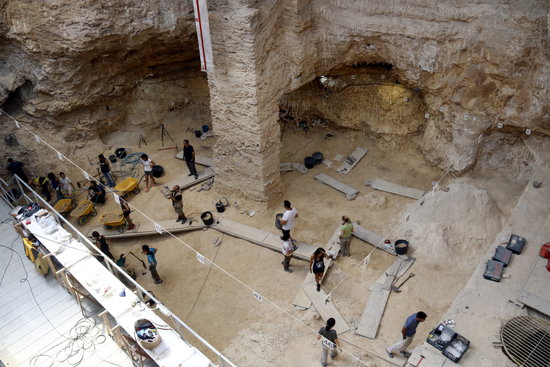Objective: getting to know life better 60,000 years ago
Archaeologists from all over the world are at work on the Abric Romaní site hoping to find remains of animals, hearths and tools

How our ancestors lived 60,000 years ago is still shrouded in mystery. Yet a group of researchers and students are determined to cast light on what life was like at the time in central Catalonia, very close to Montserrat mountain.
Abric Romaní, a site first excavated in 1909, is once again being explored this August, with archaeologists hoping to find more traces of Neanderthals living in the area 600 centuries ago.
The campaign, which finishes on August 31, aims to find the remains of animals –mainly deer and horses, but also rhinos and elephants– hearths and wooden and stone tools.
Yet the dig’s head, renowned archeologist Eudald Carbonell, said that it is very unlikely Neanderthal remains will be found, as the site was mainly used for everyday life rather than to bury people.
"The Romaní has allowed us to learn how Neanderthals used to live like nowhere else in the world," said Carbonell.
"This site is also very well-known internationally because the wooden tools have been preserved," he added. "This lets us learn something we barely knew about before: wooden tools in prehistory."
At the moment, the excavation is at the R level, that is investigating the remains of 60,000 years ago, after finishing the Q level last year (58,000 to 60,000 years ago.)